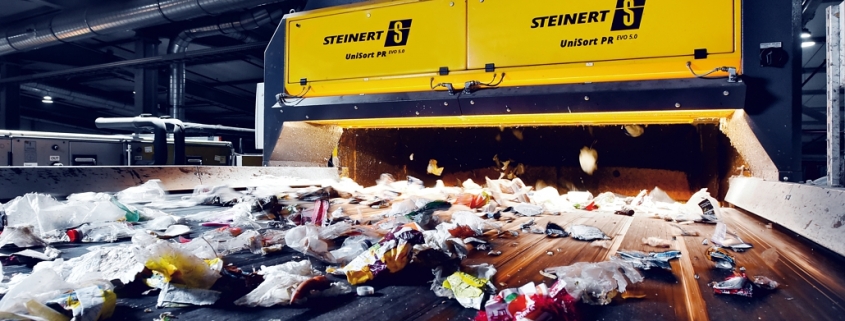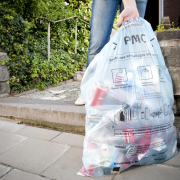Steinert: Intelligent NIR Sorting Unit
The UniSort PR EVO 5.0 reflects Steinert’s years of experience gained from several UniSort generations and the huge amounts of data that have been processed. Some sorting applications are far more complex than others and cannot be handled using conventional methods – for example sorting silicone cartridges. Since they comprise a polyethylene (PE) outer wall, they are valuable materials for recycling. Silicone residues inside the cartridge can, however, contaminate pure PE products, even rendering them unusable, and meaning that they have to be removed from the material flow.
The Intelligent Object Identifier – a system for sorting machines – has been developed for precisely this initial application, Germany-based manufacturer Steinert underlined. It is supported by Artificial Intelligence (AI) that detects and isolates these cartridges using optically detectable characteristics. “These additional distinguishing features make for a more stable sorting process, while also improving sorting results.” In the future, this technology would also support other sorting tasks or make them possible for the first time, the company is convinced. For example, Steinert is working on an addition to the sorting program to separate polyethylene terephthalate (PET) bottles and trays that will further improve sorting reliability thanks to a new object detection feature. As reported, this solution can be integrated without any additional sensorics and is downward compatible with UniSort machines dating back to 2018 with a combination of NIR and color cameras.
Machine learning
This improvement has come about through software and the latest developments in the field of machine learning, especially in artificial neural networks, one of the worldwide leading experts in senor sorting and magnetic separation for waste and metal recycling emphasized. “Machine learning is the ability of algorithms to acquire information without being explicitly programmed to do so. In its most basic form, data can, therefore, be analyzed in order to learn recognition and distinguishing features on their own and then – in the case in question – to come to a conclusion about any silicone cartridges potentially present.” The optimum precondition for this training is comprehensive and detailed data, Steinert informed. Since hyperspectral imaging (HSI) technology was introduced in 2012, the company has been generating this data and uses this technology today to create the training conditions for algorithms, “which set the bar in this industry”. The data also allows users to sort better and, in the long term, also to develop digitalization strategies, for example, for collaborations with customers and suppliers. “Users can then be provided with the best possible sorting result without having to configure parameters themselves or deal with programming.”
The UniSort PR EVO 5.0 has been put through its paces in practical trials since 2019 and is the next logical step in the evolution of sorting machines, Steinert gave account. Furthermore, it would be a showpiece of modern technology and robust engineering work. Alongside a whole host of detail improvements, the latest iteration features a design which is much easier to maintain and delivers advanced sorting results.
(GR12020, Page 51, Photo: Steinert)









